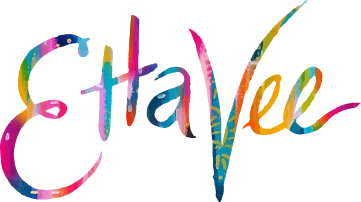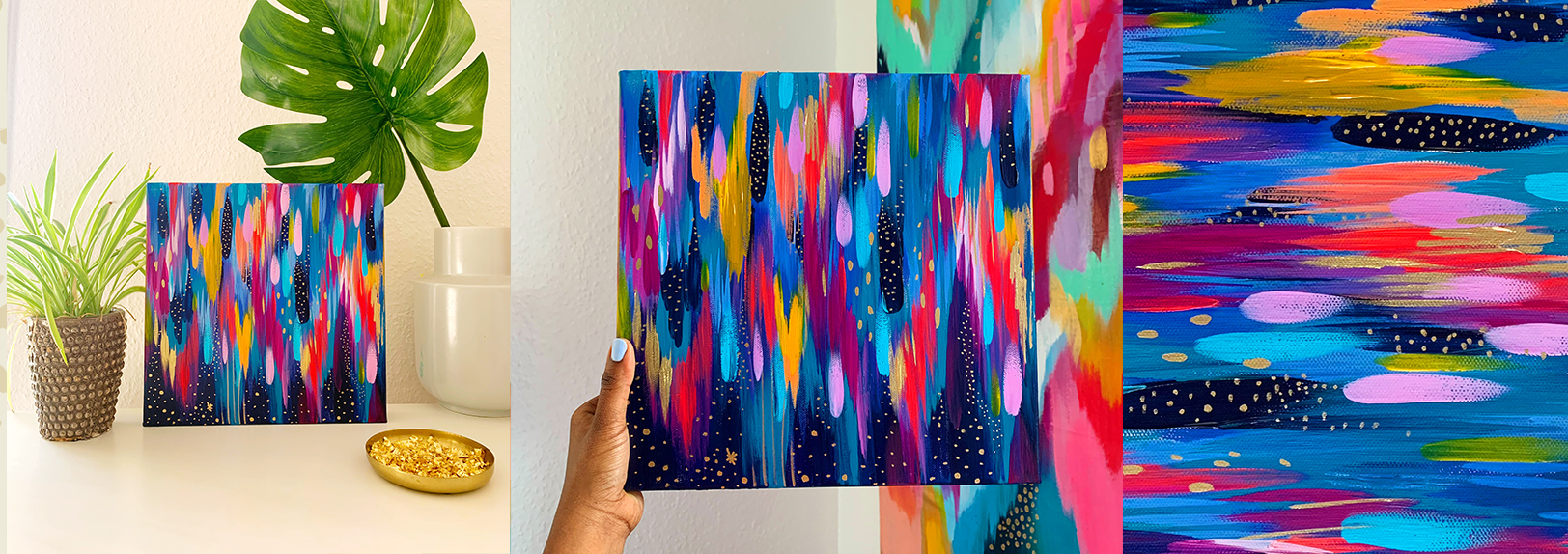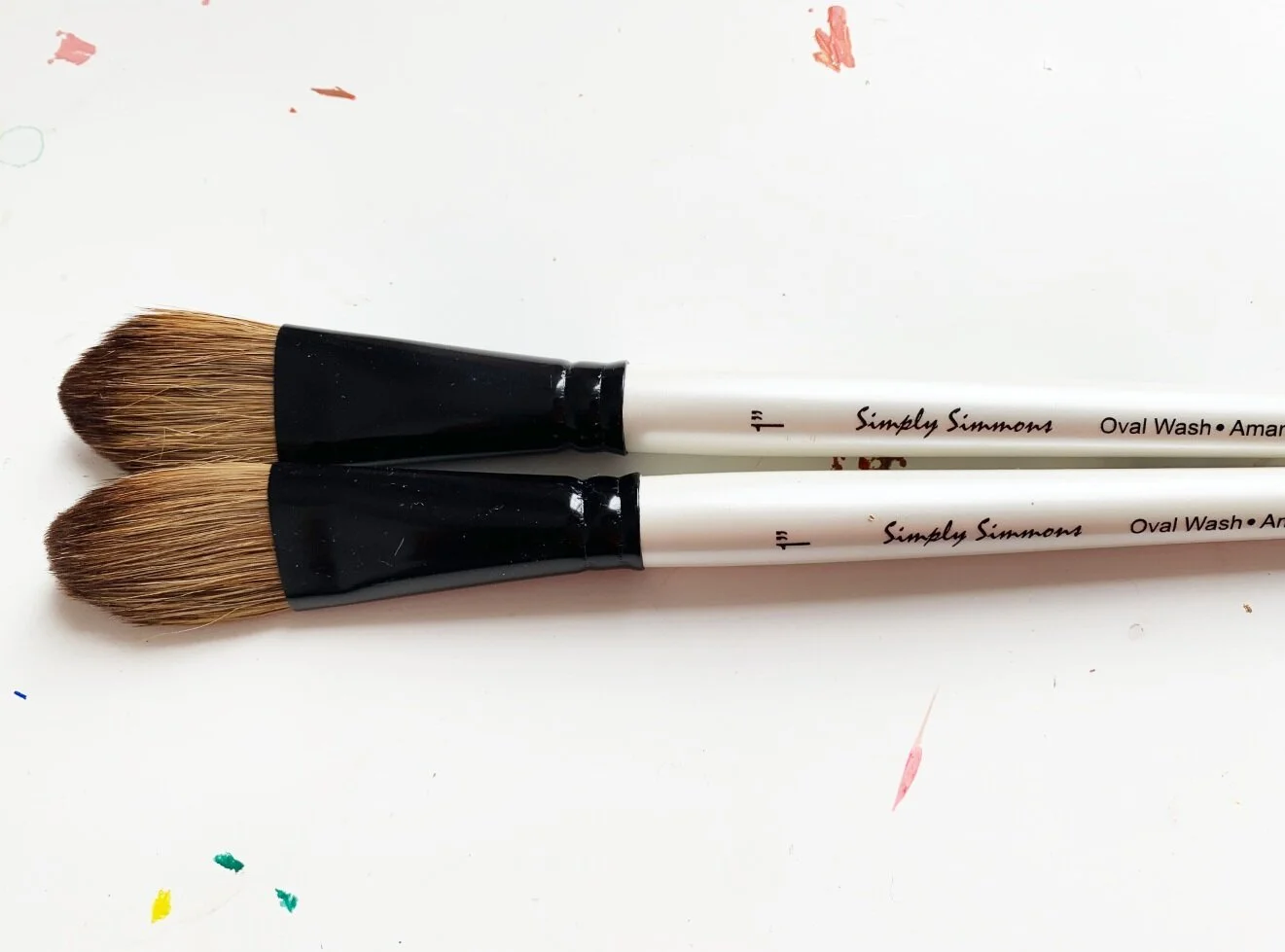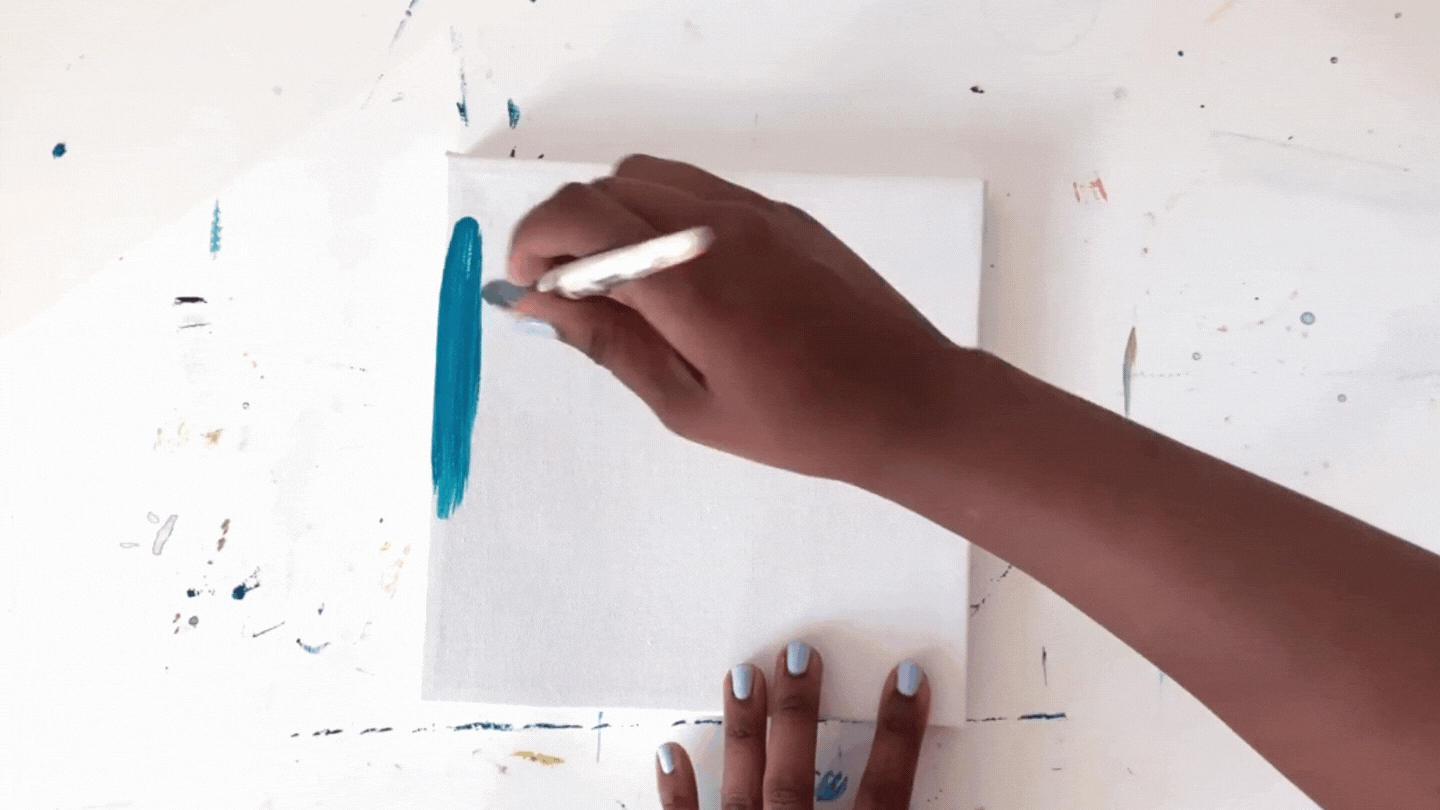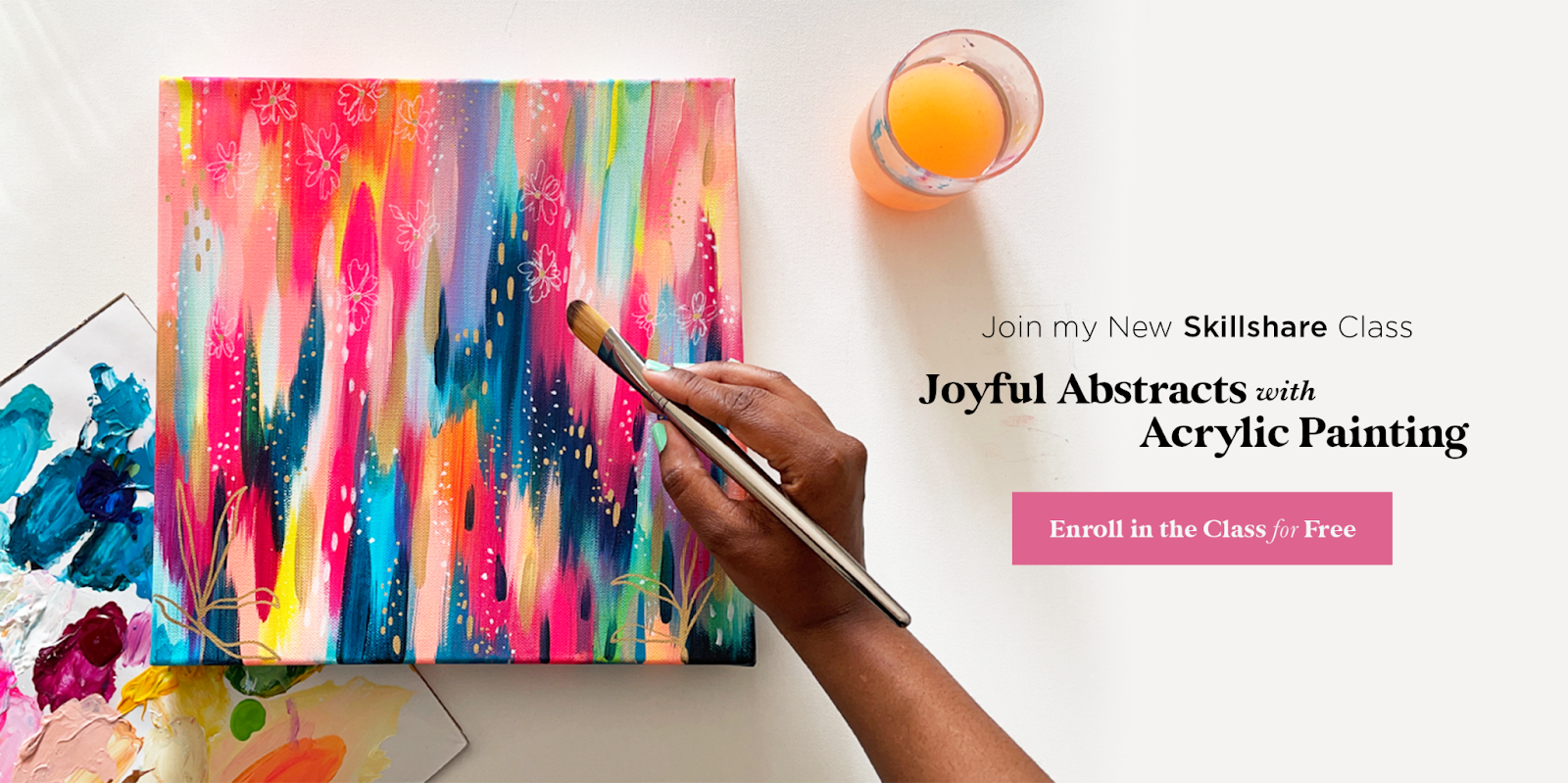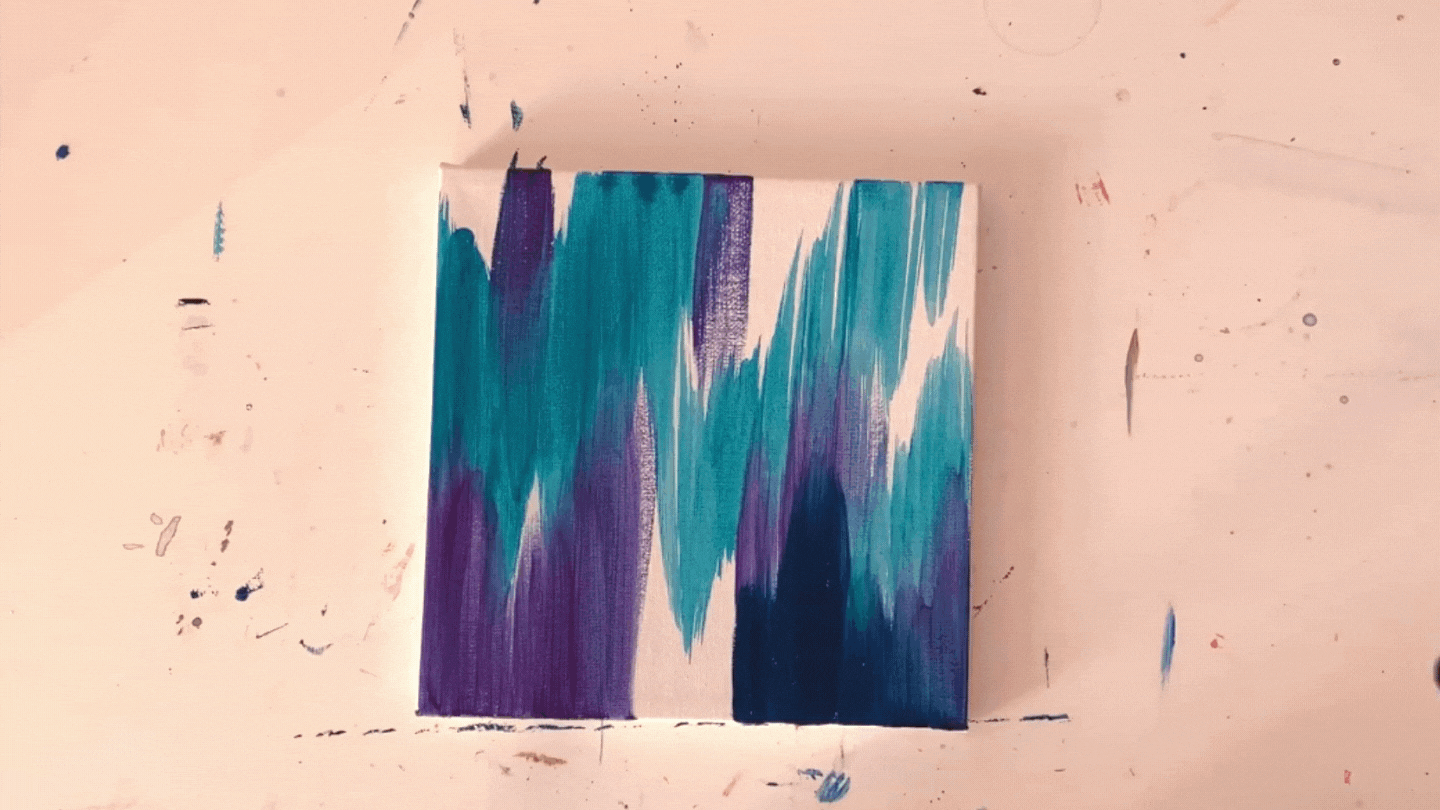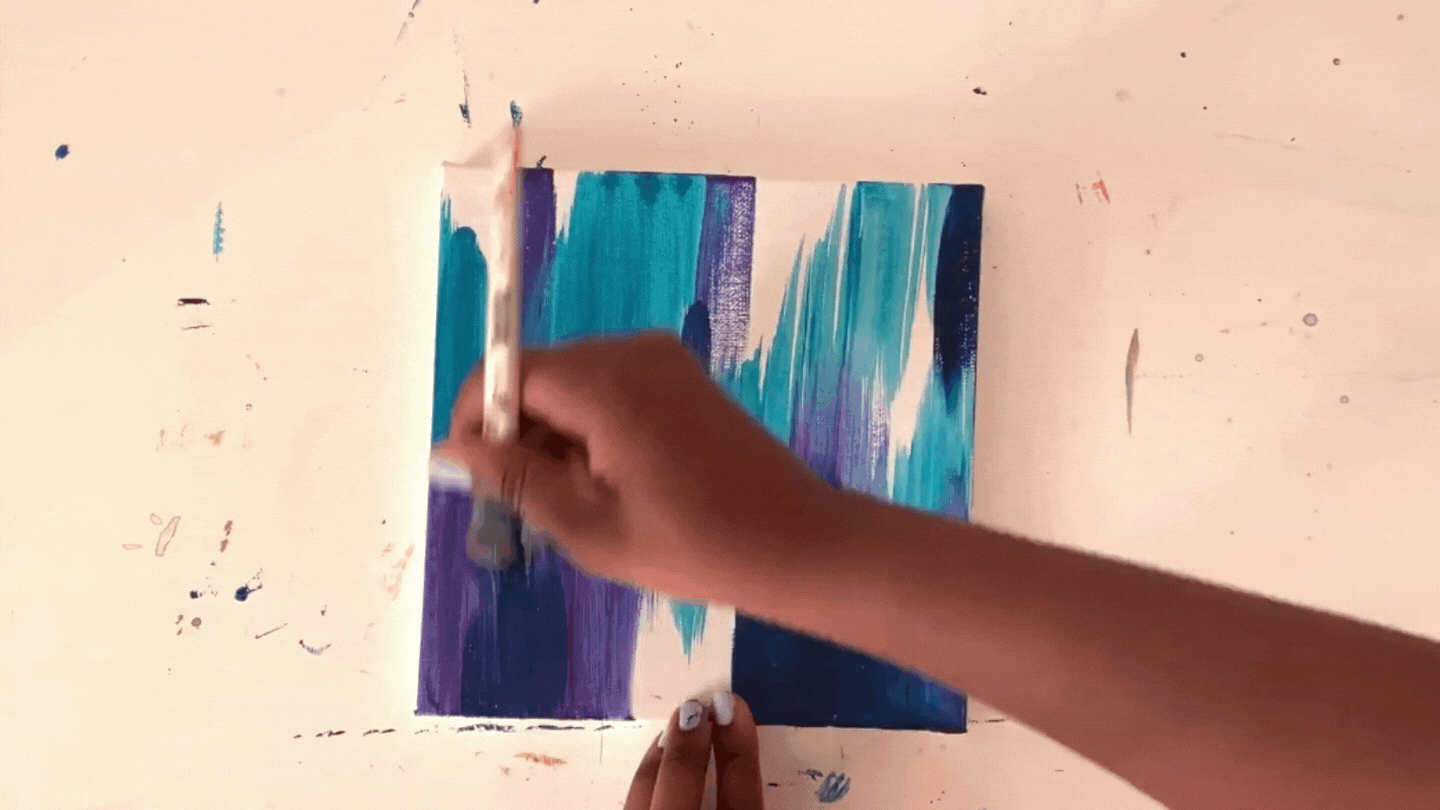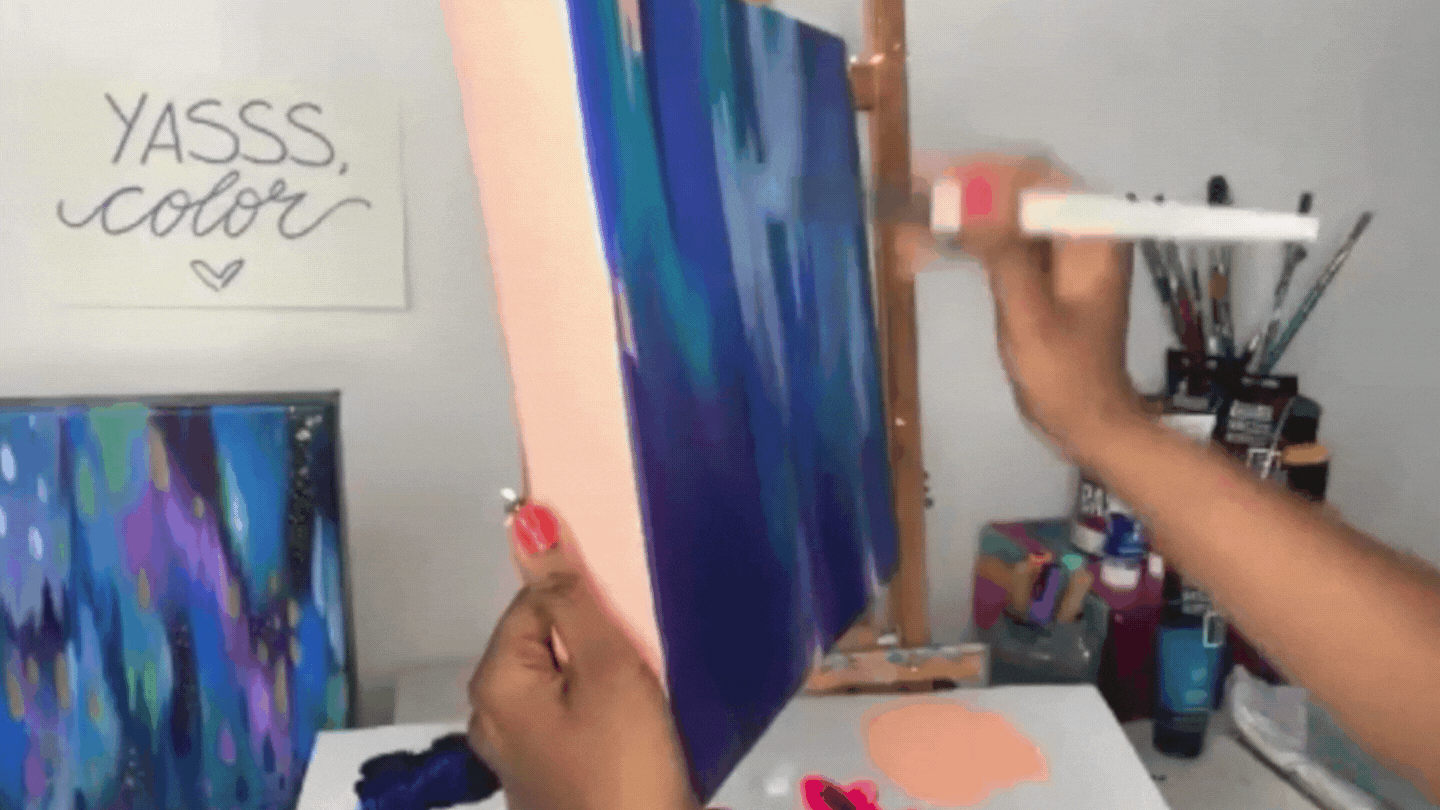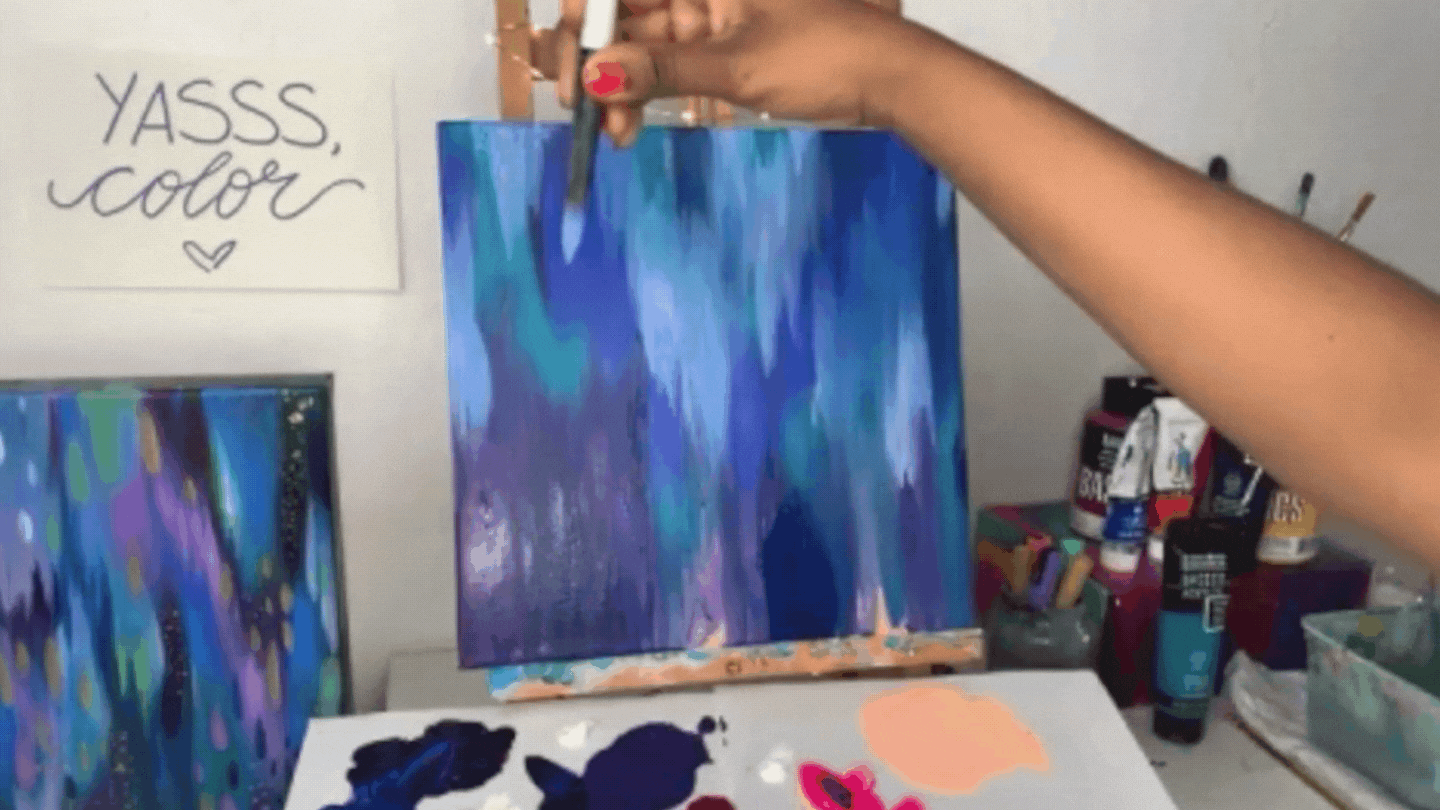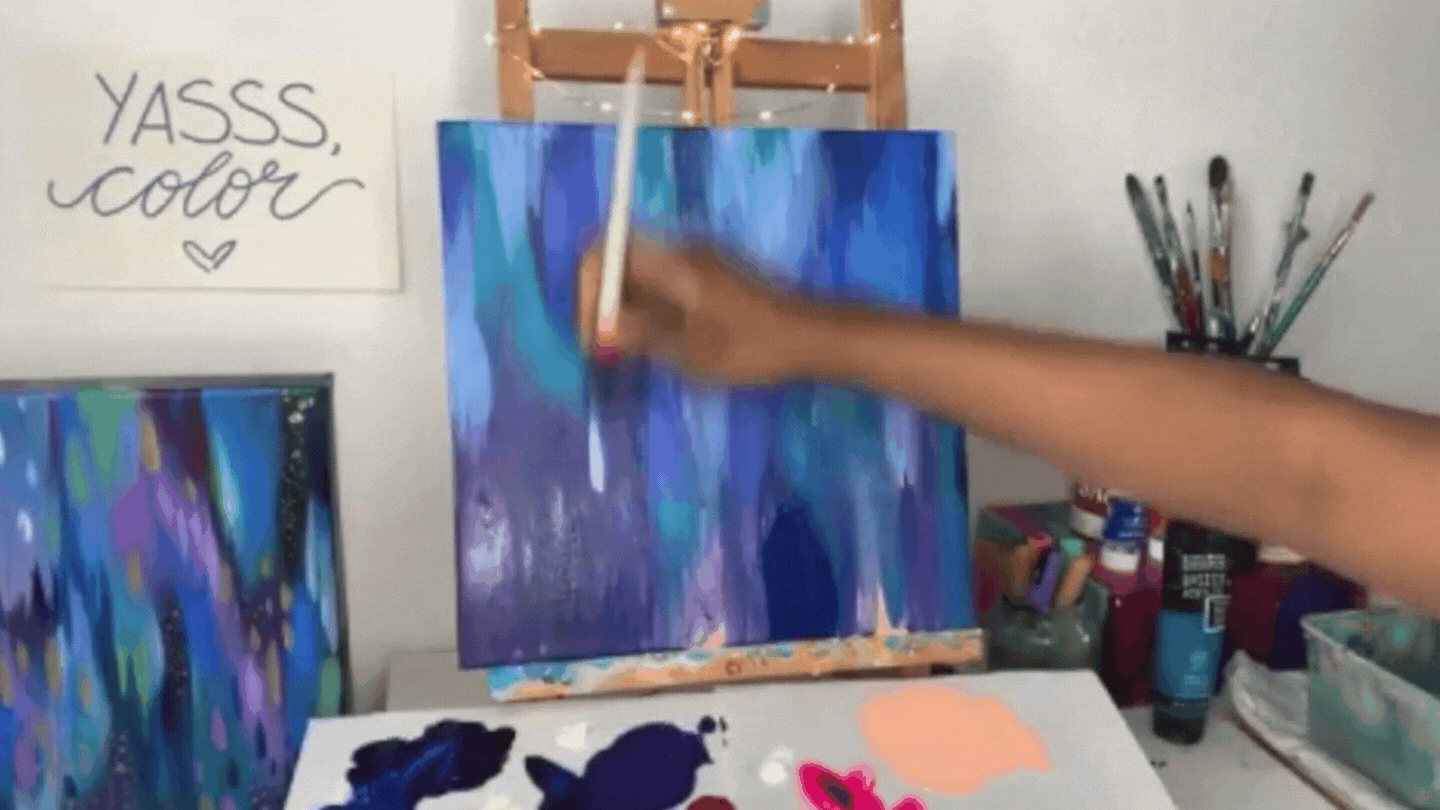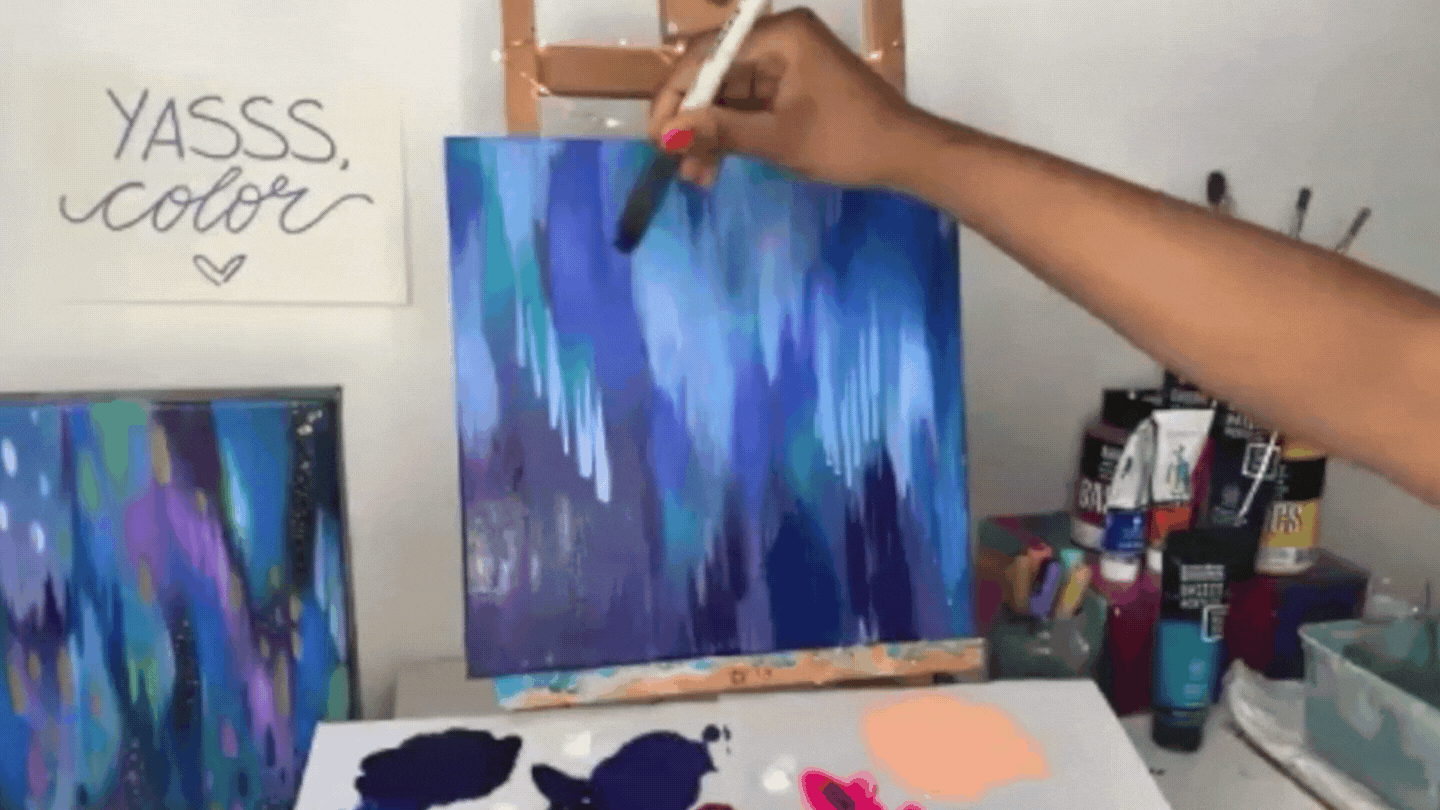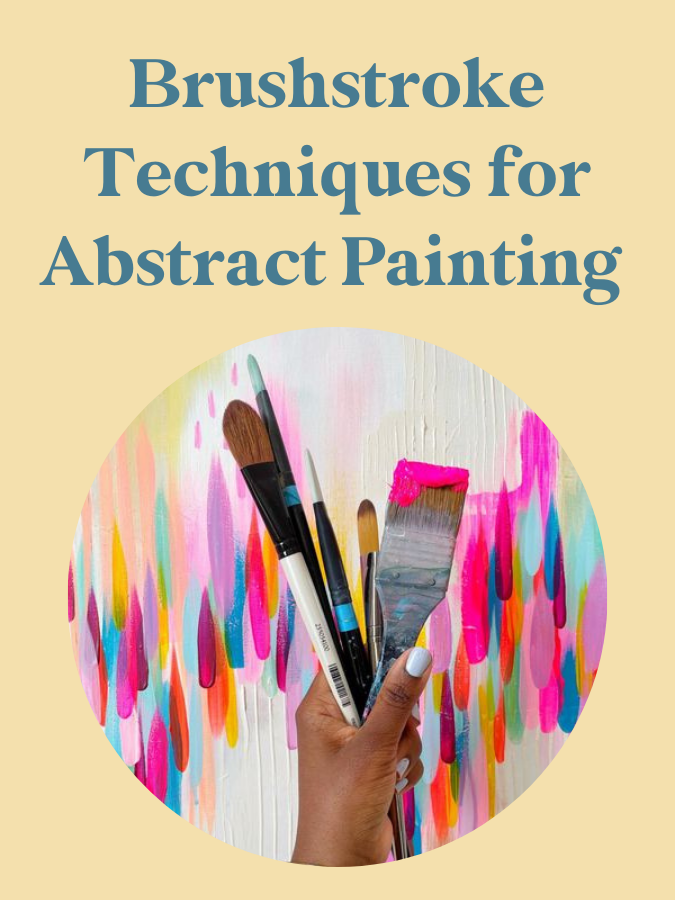Brushstroke Techniques for Abstract Acrylic Painting
In this tutorial, I’ll walk through some basic brushstroke techniques for abstract acrylic painting. My signature style is to create paintings with bright and bold visible brushstrokes. Today you’ll learn my exact techniques so you can practice creating your own bold and beautiful artwork! Follow along and learn some basic painting techniques for beginners and more advanced artists alike!
If you’re more of a hands-on learner, your might enjoy learning these techniques alongside me in one of my classes. To learn these brushstrokes in video form, join me in my Joyful Abstracts class on Skillshare!
Now let’s dive in! If we’re going to talk about brushstrokes, it starts with the brush! My favorite brush for abstract painting is the Simply Simmons 1” oval wash watercolor brush. I don’t often buy expensive brushes because I go through them so quickly! But this is my go-to brush for my abstract acrylics. It makes the most perfect brushstrokes and is so versatile! If you can’t find this exact brush, you’ll be able to follow along with any similar oval wash brush.
Basic Stroke
Let’s start with the basics. The foundational brushstroke for my painting style is a “down-up” brushstroke. If you want to follow along, grab some of your favorite acrylic paint, fill your oval wash brush, and practice this motion with me. Here is what it looks like:
As you get comfortable with the motion you can speed it up a little and smooth it out so that your strokes are more fluid.
I tend to paint my brushstrokes in a “V” shape. We won’t dive into abstract composition in this post, but if you want to learn more about how to put together an abstract composition, join me in my class, Joyful Abstracts With Acrylic Painting. In this class I walk through my entire painting process from inspiration to final piece. You can enroll in the class for free when you sign up for a free trial with Skillshare!
Now, back to brushstrokes! When you’re filling in areas at the edge of your canvas either on the top or bottom you can draw the eye to the center of the piece by going in one direction with your stroke. If I’m painting the top edge of my canvas I just do the “down” motion of the “down-up” stroke like this:
You can do the same coming from the bottom, just do the “up” portion of the stroke!
If you’re finding that your strokes are looking a little too dry, you can always add some water to your brush to smooth things out. Depending on how much water you use, this can result in a watercolor effect which can look really lovely on the first layer of your painting. Play around with this and see what you like!
Background Wash Stroke
I start my paintings with a background wash to fill the canvas with color. This serves as a great base layer for my painting and helps give the composition its shape. When I’m painting this first layer, I use the flat part of the brush using the “down-up” stroke I showed above. This gives you great coverage and a smoother look for the background. My tip for this type of brushstroke is to press harder at the beginning of the stroke and move into a looser, lighter pressure at the end of the stroke. This is what will give a nice wispy edge to your brushstrokes. I love that this makes the brushstrokes look so painterly and allows the different colors to blend well together at the edges.
In this example you can see what the brushstroke pressure looks like. Harder on the down stroke and super light on the upstroke.
Details & Top Layer Strokes
Once your base layers are complete, you’ll want to add some detail strokes. This is what helps add more visual interest to your abstract piece and gives it some movement. I use this type of stroke for the finer details on the top layers of my paintings. These strokes really pop against a blended background.
To create these strokes you’ll use the same brush, just turned to the side so you’re using the side edge of the brush instead of the flat part.
Here’s an example of the difference between how sharp the detail strokes are against the blended background.
With the side of your brush, start to make shorter strokes in one direction. This will give them a more defined, sharp edge and less of a blended wispy look like the background strokes.
Confident Accent Strokes
I’m guessing that a “confident accent stroke” isn’t something you ever heard in an art class 😅 but these strokes are some of my favorite parts of my abstract paintings. I believe that painting with confidence not only helps your paintings look more beautiful, but helps you grow as a person too. So what is a “confident brush stroke”? These are short, strong strokes painted with a bold color. I love to use deep colors like Prussian Blue, or super vibrant colors like Fluorescent Pink!
We’re trying to evoke a feeling with abstract art, and one of the things that I always want to convey with my pieces is the idea of being bold and confident. These accent strokes evoke a feeling of surprise and excitement for the viewer of the painting and give the composition some more shape.
No matter what kind of brushstrokes or paintings you’re creating, I encourage you to make your marks on the canvas with confidence. If we worry about getting it perfect, it often keeps us from creating in the first place. Paint with bold strokes, and if it doesn't turn out exactly as you were hoping for, the best part is that you can always paint another piece! After all, we all create art because we enjoy it. The worst thing that can happen if you make a bold stroke that doesn’t work out is that you get to create another piece of art! Doesn’t sound too bad to me. 😉
Experiment!
At the end of the day, abstract art is a very personal art form. You have free rein to express yourself in whatever way feels best for you. These brushstroke techniques are here as a guide and a jumping off point, but with abstract there are no “must-do's''. I always encourage my students to play. Play with different pressure, different amounts of paint on your brush, adding water to your brush, which parts of the brush you paint with - the options are endless. Maybe you even want to try ditching the brush and finger painting for a while! It’s all up to you. Let your creative inner child run free and discover your favorite ways to make brushstrokes on the canvas!
xo, Jessi
I hope this brushstroke tutorial was helpful! If you want to learn more about abstract painting I would love for you to join me in my online classes where I teach my abstract process through fun step-by-step projects!
Pin this post for later! 📌
Hover or tap on this image and click the “Save” button on the top left!
